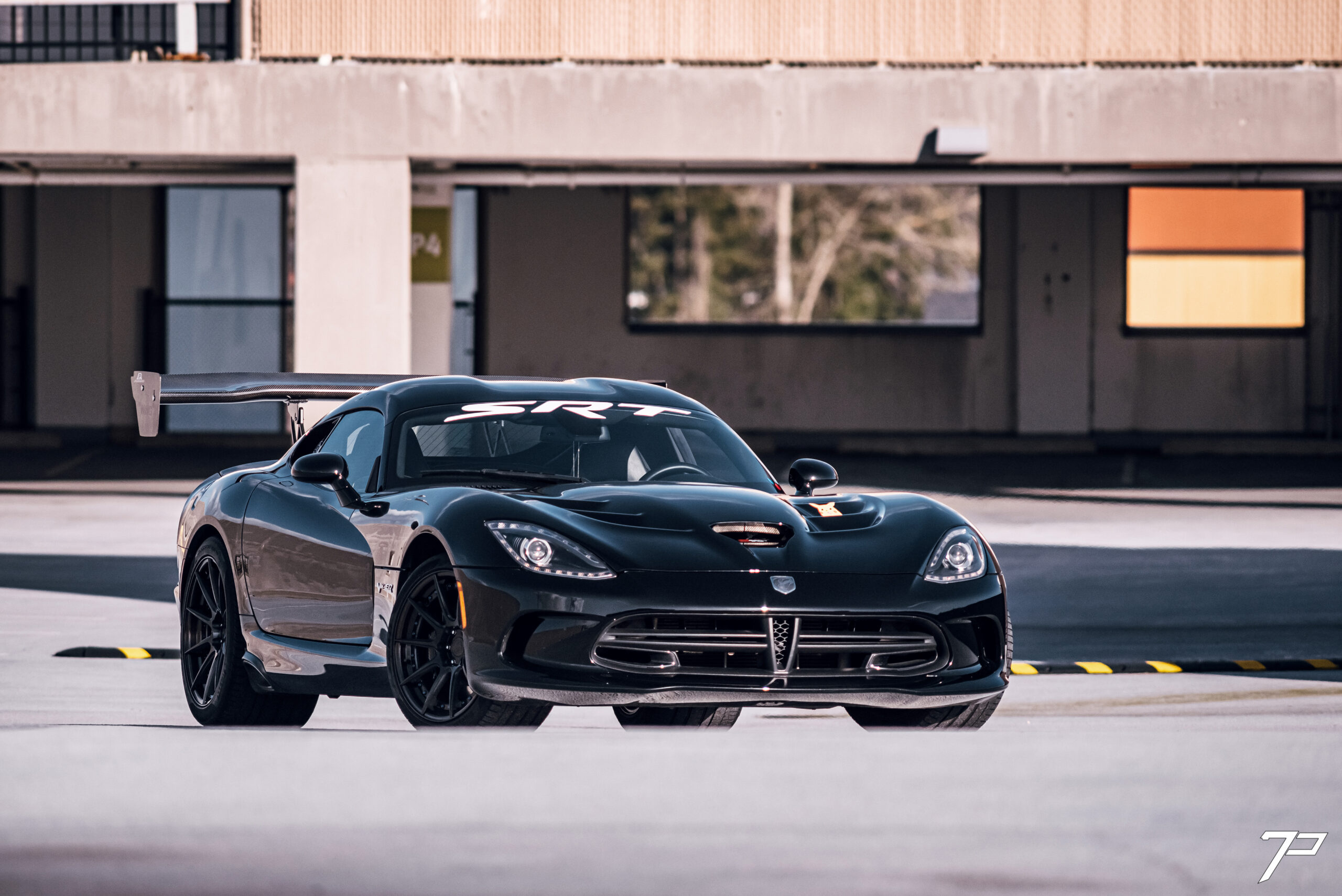The “American performance car.”
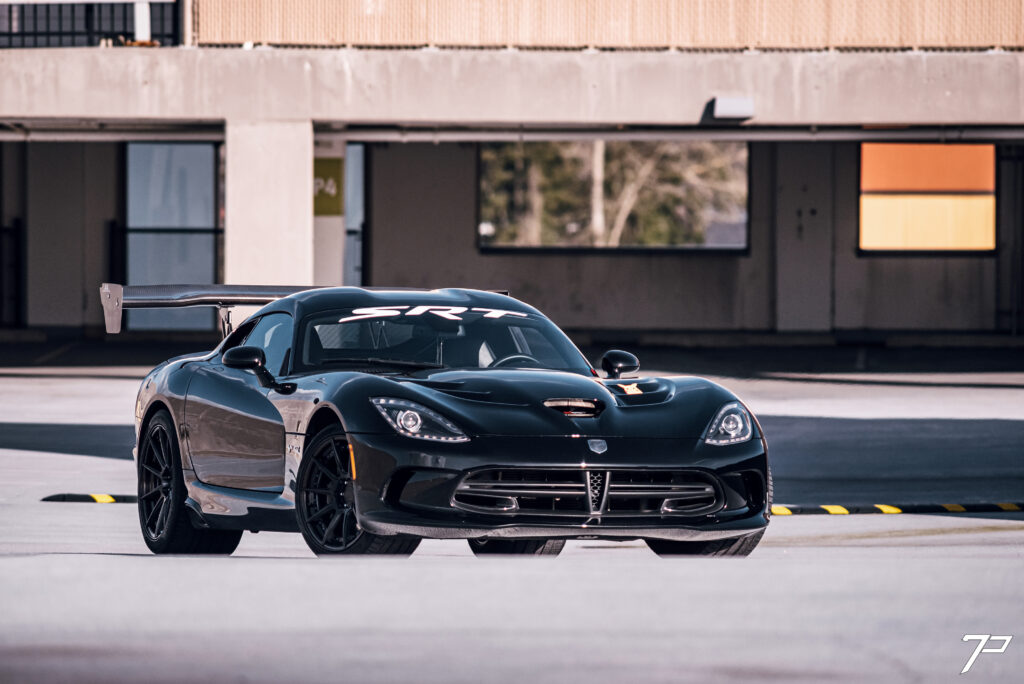
Visions of big burly V8s tearing down a stretch of two-lane blacktop and “stock” cars on banked ovals. Many snicker at the thought of them only being able to turn left. However, many of America’s best could tangle wit European sportscars, such as Gary’s Viper, which wouldn’t be here if it weren’t for one man. Carroll Shelby. Before getting to that, let’s dive into a history lesson showcasing the most famous serpents in the world.

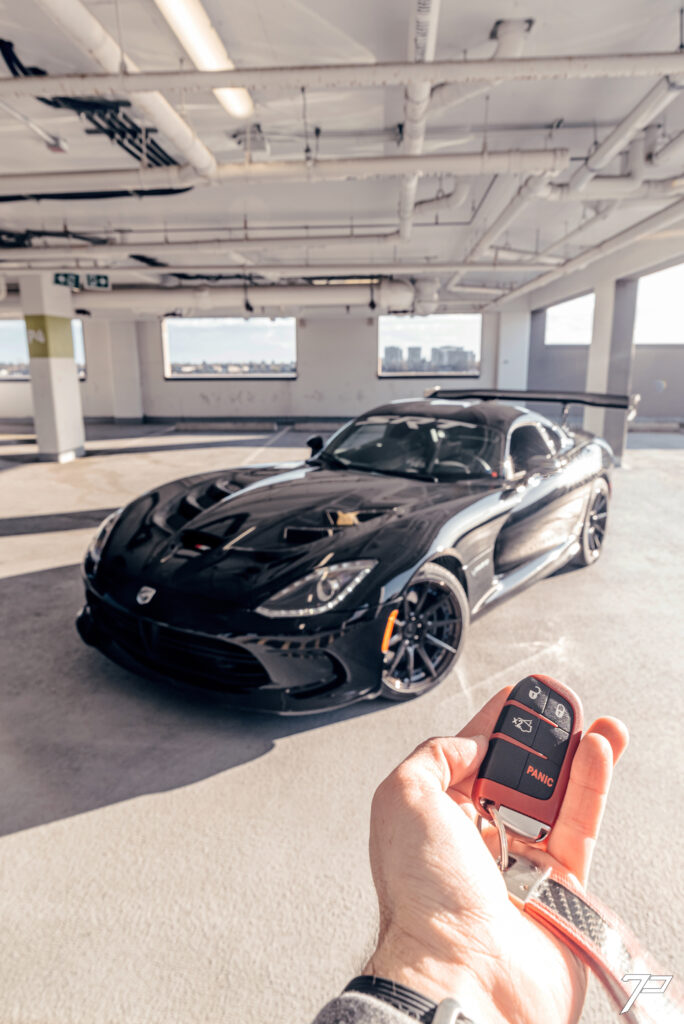

The original Cobra was the brainchild of Carroll Shelby, who went to AC Cars and requested an Ace Roadster to be built with room in the engine bay for a V8 as their original engine supplier Bristol Cars, had ceased production. Shelby persuaded Ford’s Vice-President/GM Lee Iacocca to provide a small-block V8 to shoehorn between Ace’s fenders, turning it into a legendary serpent known as Cobra. Ford was already providing engines for another sports manufacturer known as DeTomaso, so the Cobra sounded like a reasonable decision.
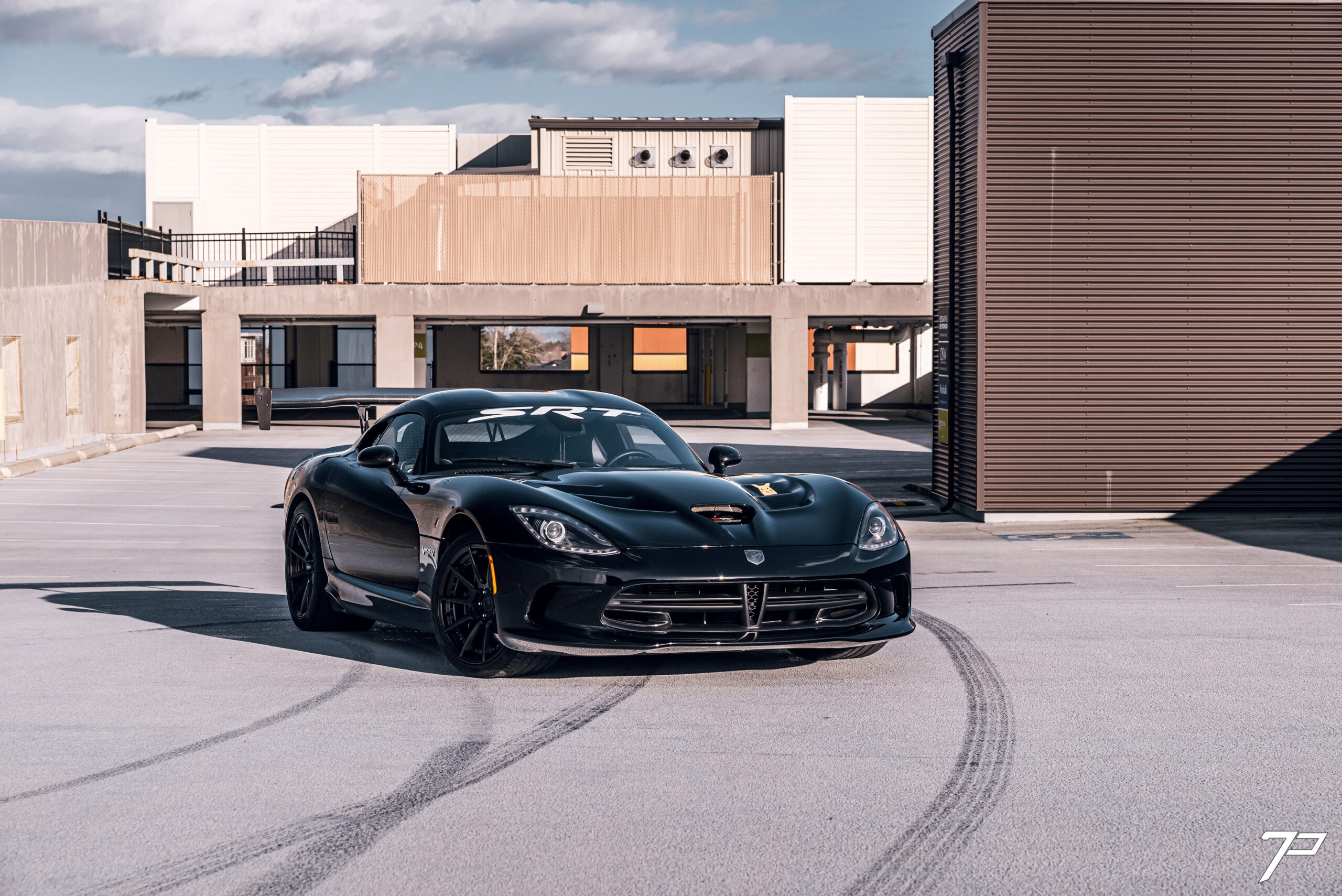
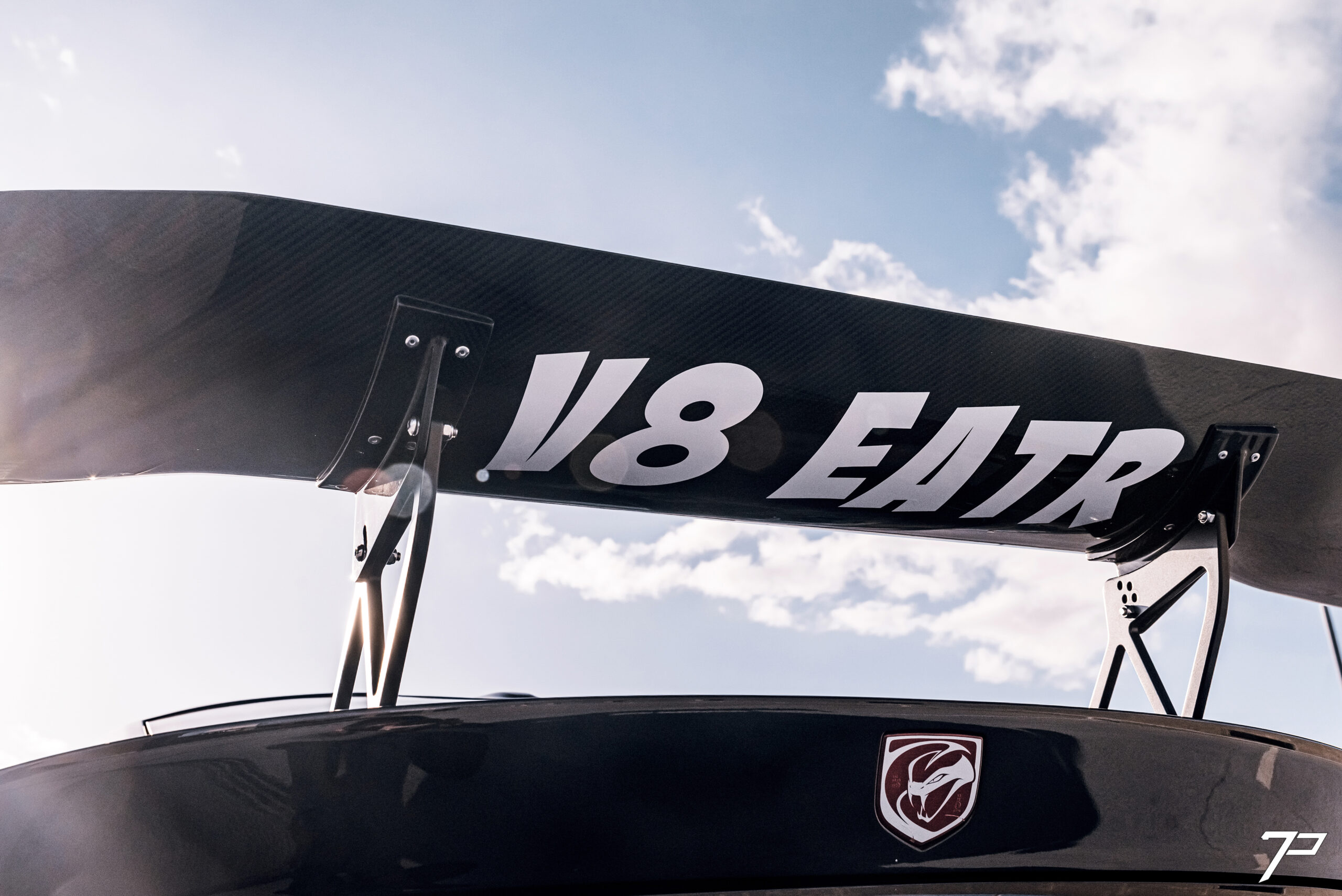
Encouraged by the success of Carroll’s Cobra, a bitter rivalry between the two engineers started. Alejandro De Tomaso developed the Pantera, which sold in Ford dealerships due to the sports car’s powerplant. The Pantera was quite different from the Cobra mentioned above but still similar. A European-inspired wedge shape from the Ghia styling house likened the coupe to the earlier Lamborghini Miura and Alejandro’s Mangusta. De Tomaso gifted a GT5-S Pantera to Carroll in 1983, perhaps to ease the tension between the two rivals. But how does the Pantera fit into the storyline between the two famous serpents?

Carroll Shelby, the master automotive engine, felt the Pantera could benefit from more power and performance considering its engine placement and weight distribution. In 1987, before the Viper was a clay model Carroll witnessed his friend Gale Banks take the record of World’s Fastest Passenger Car on the Bonneville Sale Flats in a new Pontiac Firebird strapped with a pair of turbochargers amongst other engine modifications. Both impressed and full of excitement, Shelby decided to implement forced induction into his Pantera. With Carroll’s new relationship at Chrysler and already fettling with many of their compact offerings after Lee Iacocca’s persuasion. A Chrysler “Nascar specification” 360 cubic inch V8 found its way into the Pantera engine bay along with a pair of turbochargers. This car would get Carroll to push Chrysler into designing the modern performance marvel later known as the Viper.

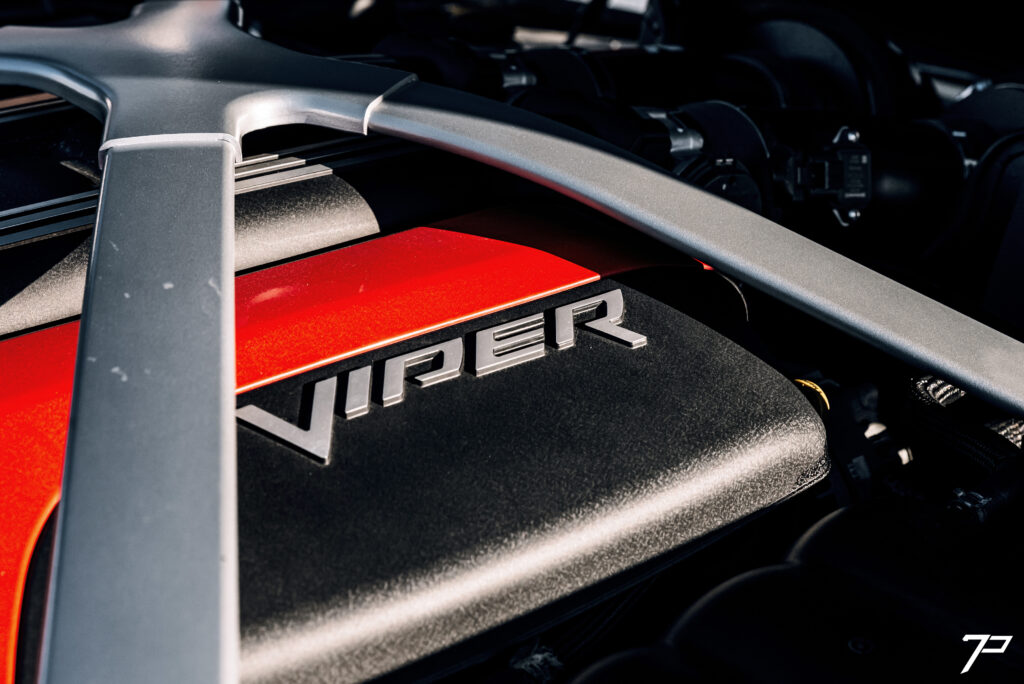
Bob Lutz, president of Chrysler during the late 1980s, suggested that the company produce a modern Cobra after Carroll and Lee’s past relationship. After a few months in the design studio, the Viper (chosen because Cobra was trademarked) was unveiled at the 1989 North American International Auto Show (NAIAS) with an excellent initial reaction from the public. The project was approved in May 1990, and a pre-production model was later driven by Carroll Shelby in the 1991 Indianapolis 500 as a pace car to showcase the new model for 1992.

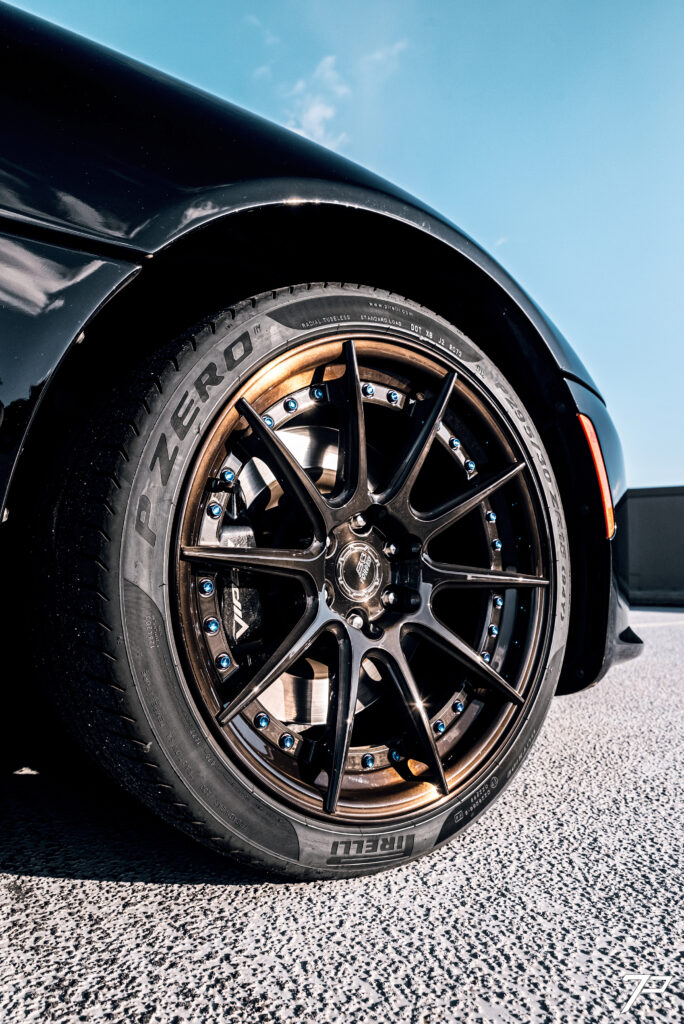
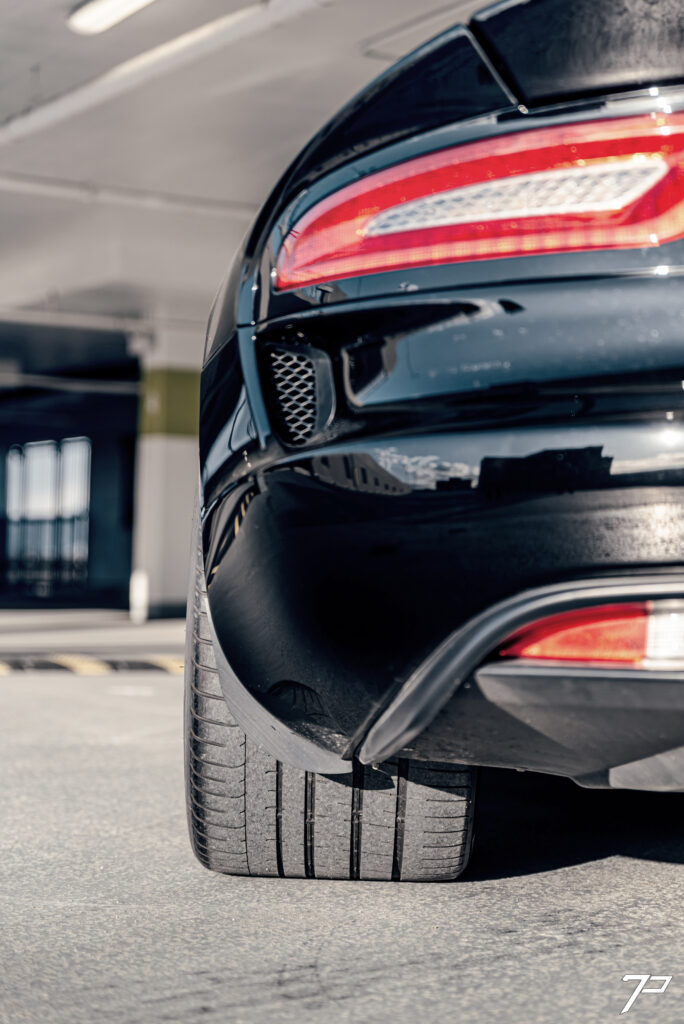
The Viper is now in the fifth generation that lasted from 2013-2017 and has made quite the name for itself. Wearing a skin wholly made of carbon fibre, the serpent still uses a large clamshell hood to cover its behemoth and engine and fastback look with a hatch for trunk access like the original GTS coupe. Our featured car uses an APR high mount spoiler to differentiate it from other snakes, improving aerodynamics and reducing rear-end lift.

Under the long vented carbon hood resides the beast’s heart, an 8.4-litre all-aluminum V10 equipped with single overhead camshafts and variable valve timing. This engine can trace its roots to the same “LA series” 360 V8 found in Shelby’s Pantera. Dodge originally produced an iron block version of the engine for the Ram 2500 and 3500 heavy-duty pickups for improved towing and hauling capacity. Under Bob Lutz’s direction, Lamborghini (under Chrysler’s ownership when the Viper was conceived) was used to engineer the block from Aluminum for use in the then-new Viper. Besides having an aluminum block and cylinder heads, the V10 uses diecast magnesium valve covers to improve sealing. The ten-cylinder generates 645hp and 600lb/ft of torque. Helping put all of that power to the ground is a Tremec TR6060 6-speed manual transmission equipped with a twin-plate clutch and aluminum flywheel, which sends it all to the rear wheels through a speed-sensitive limited-slip differential.
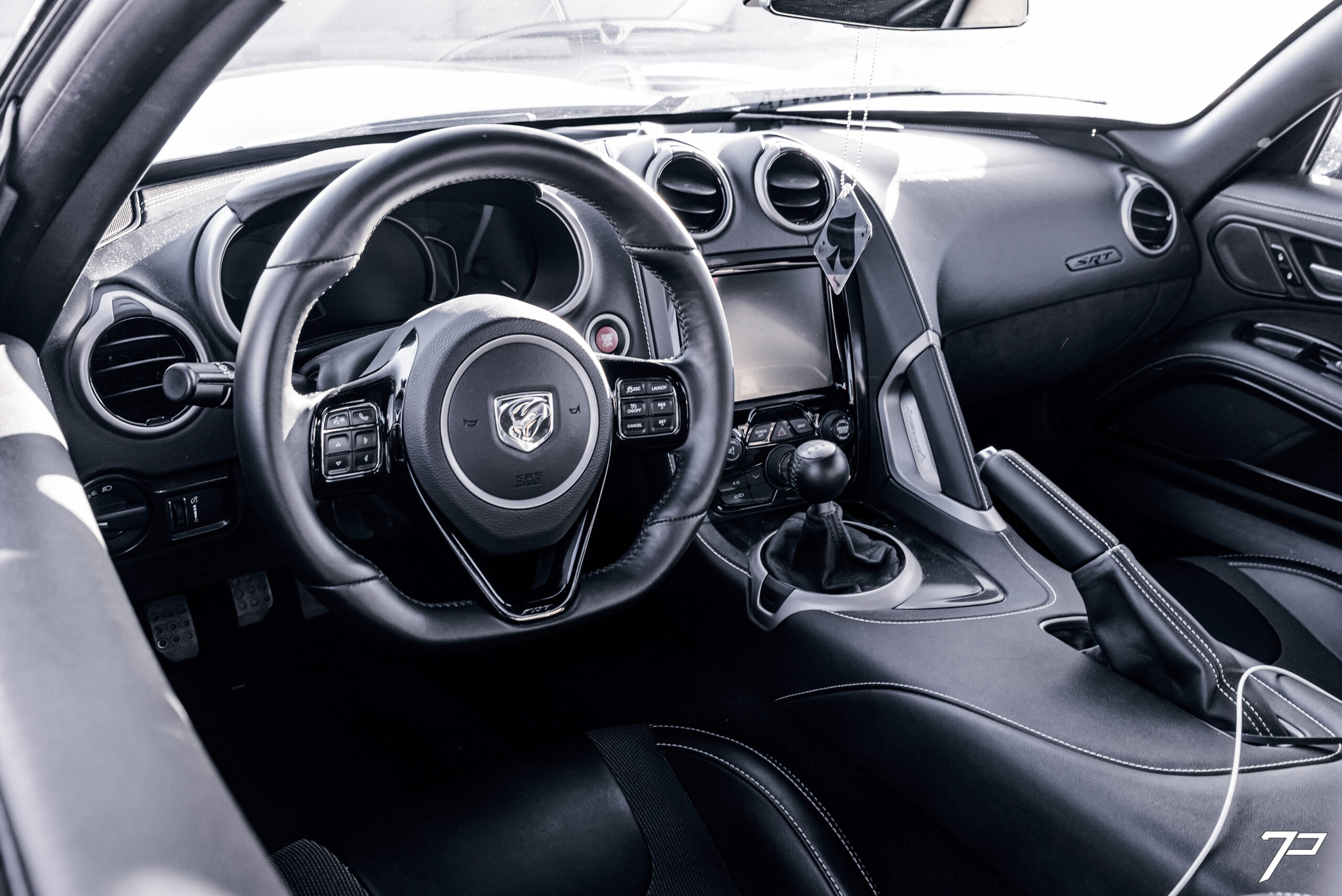
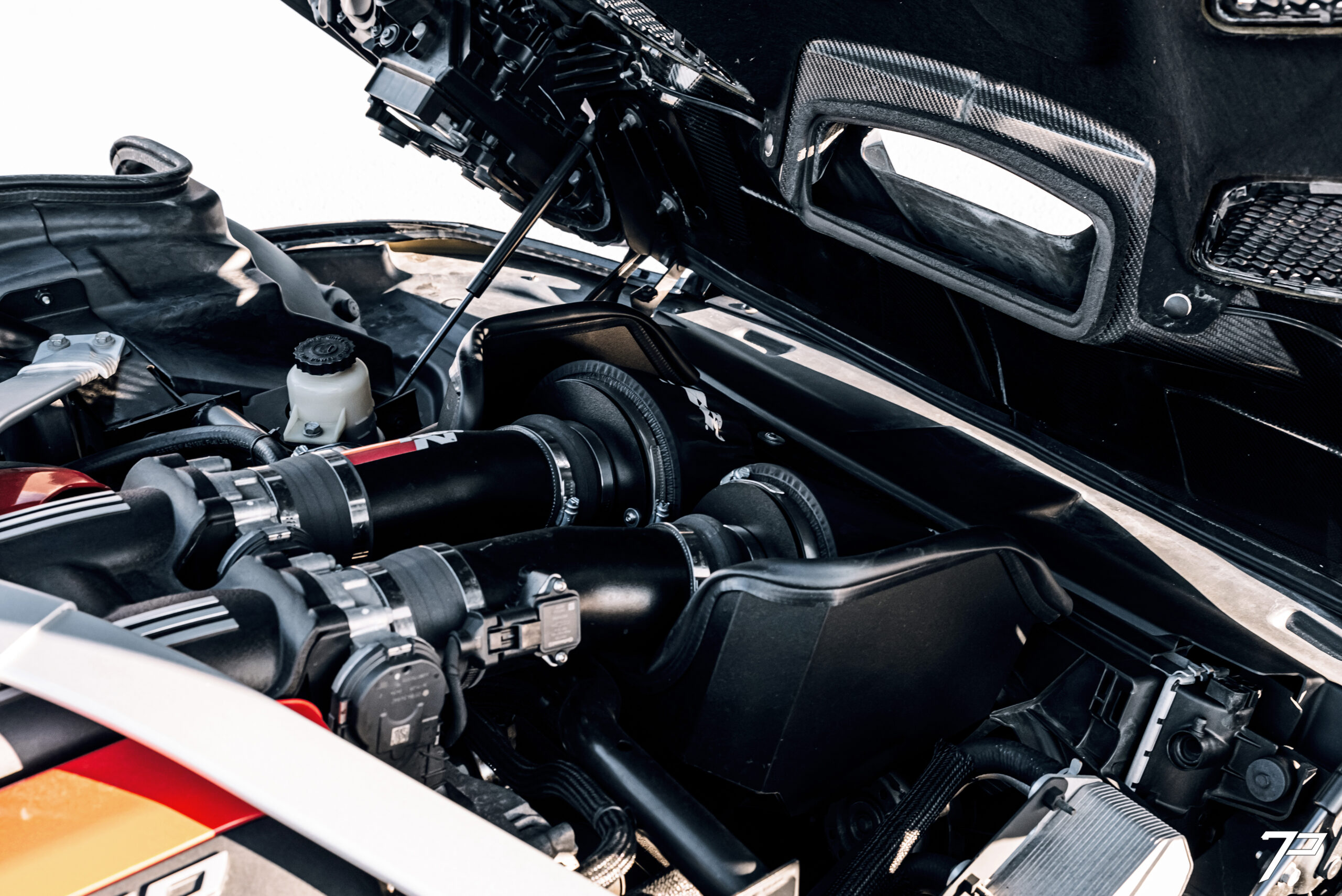
Beneath the carbon and aluminum skin, the Viper rides on double wishbone suspension, using cast aluminum control arms. Brembo handles the braking with fixed aluminum multi-piston calipers coated black to improve heat dissipation clamping down on two-piece floating brake discs. The immense stopping power is covered by a set of double staggered (front and rear wheel diameters and width are different) forged multi-piece wheels from BC Forged.

Though discontinued, the Viper is still one of the peaks of American sports cars. For example, in glorious fashion, holding a lap record at the esteemed Nürburgring Nordschleife (in ACR guise) before the Lamborghini Aventador SVJ stole that title. We hope for a modern rendition of the Viper, as there isn’t quite as raw or visceral as this deadly serpent.

